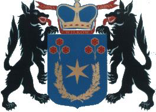The key assets of the district of Namysłów are its long and interesting history, preserved in various historic objects and structures, and its rich and in some places still unexplored natural landscapes. A major element of the Zone is the Stobrawa Landscape Park.
Several years ago, at the initiative of the district of Namysłów, a number of local governments from the north-western part of the Opolskie Voivodeship which shared geographical and landscape features, as well as other public entities, decided to work together to facilitate the development of their “sub-region”. Their activities were based on using the historic and natural potential of the area. The planned outcome of the undertakings carried out as part of the Stobrawa Rehabilitation and Recreation Zone - as the development concept was named - would be the economic growth of the area and the creation of a regional brand based on its potential as a tourist and health destination (in the latter respect, the key initiative was to restore the health resort status of Pokój).
One of the outcomes of the intersectoral cooperation is the project developed by a group of local governments titled “The protection, promotion and development of the cultural heritage of the northern part of the Stobrawa Rehabilitation and Recreation Zone”. The project is being implemented by the district of Namysłów and the municipalities of Świerczów, Wilków and Domaszowice, as well as five local Roman Catholic parishes. The project has received funding under the Regional Operational Programme for Opolskie Voivodeship 2014-2020. Based on combining the renovation and protection of historic objects with a broad range of educational and informational activities, providing digital access to the local cultural heritage resources, and ensuring accessibility for persons with disabilities, the project implements innovative ideas for attracting tourists and other persons visiting the district of Namysłów with its culture and history.
Under the project, 22 historic objects (churches, shrines, sections of the town walls of Namysłów, statues, pipe organs, paintings and bell towers) received the necessary protection or underwent renovation and restoration works; 7 multimedia systems for churches were acquires; a platform was developed to provide digital access to historic and cultural resources, and a mobile app to increase the attractiveness of the area to tourists; 12 tactile graphic maps for people were installed to enable people with vision impairment to learn the plans of historic objects and read their descriptions in braille alphabet; architectural barriers were removed to facilitate access for persons with disabilities; guides in several languages were published describing the historic objects and cultural values of the region; and educational workshops were carried out for children and youth to teach them about the importance of cultural heritage.

 Powiat
Powiat Gmina
Gmina Gmina
Gmina Gmina
Gmina